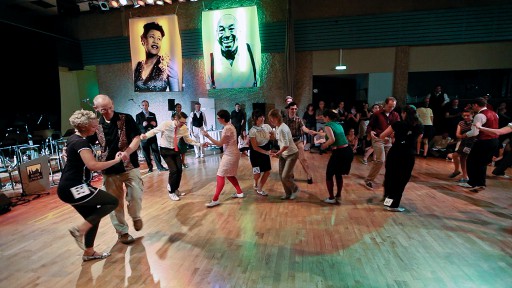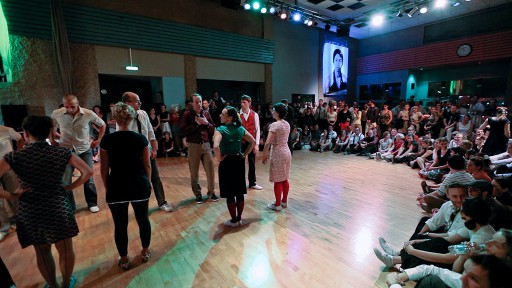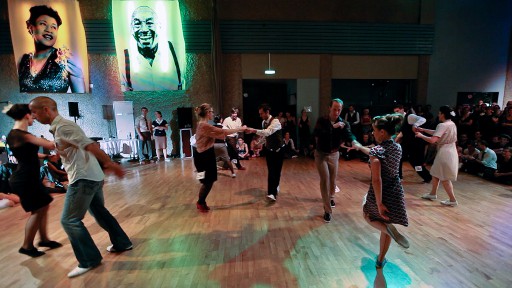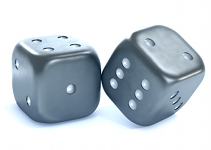Last weekend, Stir It! 2011 was happening here in Zurich Switzerland and I was in charge for the Jack & Jill (J&J) competition, which we organized for the third time this year.
Many attendees at the weekend started swing dancing just recently and never have heard about Jack & Jill competitions before. I also got asked quite often, why to enter such a competition at all.
So, I thought why not writing a post about this topic, in the hope that next year, there will be no doubt about signing up.
You have to know, that Swiss people usually are rather non-competitive (it's in our genes) so you need some soft pressure to have them participating in a contest! 🙂

What Is A Jack & Jill Competition
The concept and the name of Jack & Jill competitions were created and introduced in the early 1950s by Jack Carey in Norwalk, Southern California.
Dancers of all levels are encouraged to enter a J&J competition.
The focus is on social dancing and improvisation. Leaders and followers are randomly matched and they dance to music they don't know before.
So, J&J contests are first of all about having fun on the dance floor while spontaneously dancing with a variety partners. A good portion of luck is required to win a J&J competition!
J&J competitions are very popular in the Swing dance world and most of the international Swing dance events offer at least a J&J competition nowadays.
How Does It Work
There are different ways to run a Jack & Jill contest, especially for the finals there are many format variations existing.
First, let's have a look at a typical setup:
- Leaders and followers sign up separately for the competition, before or at the event. Depending on the organizers, you either have to pay an entry fee (especially when there are money prizes for the winners) or it's free.
Preliminary rounds and if required semi-finals
One or several heats (groups of competitors) are possible
- Individual followers and leader are called out and lining up in two opposed lines facing each other.
- A random number will be drawn by a dice (nowadays iPhone App :)) or by somebody from the audience and (mostly) the followers are moving down the line the chosen number. So for example four is the number, then the followers are moving down four leaders. The new opposed leader is now the first dance partner in the competition.
- The randomly matched couples dance for 90-120 seconds to DJ music or to a band.
- The procedure of 2. and 3. will be repeated with varying tempos and styles. Quite common are three songs per heat, sometimes extra songs are required by the judges.
- Leaders and followers are judged individually. Judges are determine the dancers for the (semi-) finals by checking «yes» or «maybe» on the score sheet. At this point, no rankings are made.
Finals
As a wrote before, there are different ways to run the finals. Here are some possibilities:
- The followers draw the name of their partner out of a hat. The chosen partner is the competition partner for the finals. They will be judged and ranked as a couple.
- Real Jack & Jill: Let's say there are five followers and five leaders in the finals. Every follower has to dance with every leader, the dancers will be judged and ranked individually.a
- Real Jack & Jill, but without judges, the finalists rank themselves! I learned about this system the first time in Eauze last summer and we adapted it and used it at Stir It! as well. Here is how it goes. Every follower has to dance with every leader. After the five songs are finished, the followers and leaders rank each other individually. Interesting about this concept is, that the final result is often differing from the audience expectation.
Spotlight Format
In the finals, where the dancers are judged as couples, the spotlight format is very common. That means, after an all-skate round (all the couples are dancing at the same time on the dancefloor), every couple dances individually in front of the audience and the judges. So the spotlight is for 90 seconds on one single couple. After the spotlights there is another all-skate round.
Invitational Jack & Jill
This is also a special form of a Jack & Jill competition. It is designed for high level dancers such as international instructors, so that they are not competing in the regular categories.
As its name implies, the competitors are invited by the organizers. The dance couples are also drawn randomly and they dance in the spotlight format. While one couple dance the spotlight, all the other dancers are sitting in the back and are judging. So, they are judging each other.
Here is an example from ILHC 2011:
Ranking
Normally, the Relative Placement Scoring System will be used to determine the rankings.
Bottom Line
I hope, I could give you an insight in a Jack & Jill competition. Now it's up to you to take the advantage and to enter the next J&J contest. Don't forget, J&J contests shouldn't be taken too seriously… HAVE FUN!
Pictures (video stills) by Stefan Deuber from Stir It! 2011 in Zurich






